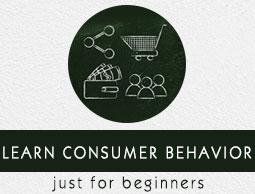Buying Decision Process
Consumer Buying Behavior
Consumer buying behavior is the study of an individual or a household that purchases products for personal consumption. The process of buying behavior is shown in the following figure −

Stages of Purchasing Process
A consumer undergoes the following stages before making a purchase decision −
Stage 1 − Needs / Requirements
It is the first stage of the buying process where the consumer recognizes a problem or a requirement that needs to be fulfilled. The requirements can be generated either by internal stimuli or external stimuli. In this stage, the marketer should study and understand the consumers to find out what kinds of needs arise, what brought them about, and how they led the consumer towards a particular product.
Stage 2 − Information Search
In this stage, the consumer seeks more information. The consumer may have keen attention or may go into active information search. The consumer can obtain information from any of the several sources. This include personal sources (family, friends, neighbors, and acquaintances), industrial sources (advertising, sales people, dealers, packaging), public sources (mass media, consumer-rating and organization), and experiential sources (handling, examining, using the product). The relative influence of these information sources varies with the product and the buyer.
Stage 3 − Evaluation of Alternatives
In this stage, the consumer uses information to evaluate alternative brands from different alternatives. How consumers go about evaluating purchase alternatives depends on the individual consumer and the specific buying situation. In some cases, consumers use logical thinking, whereas in other cases, consumers do little or no evaluating; instead they buy on aspiration and rely on intuition. Sometimes consumers make buying decisions on their own; sometimes they depend on friends, relatives, consumer guides, or sales persons.
Stage 4 − Purchase Decision
In this stage, the consumer actually buys the product. Generally, a consumer will buy the most favorite brand, but there can be two factors, i.e., purchase intentions and purchase decision. The first factor is the attitude of others and the second is unforeseen situational factors. The consumer may form a purchase intention based on factors such as usual income, usual price, and usual product benefits.
Stage 5 − Post-Purchase Behavior
In this stage, the consumers take further steps after purchase based on their satisfaction and dissatisfaction. The satisfaction and dissatisfaction depend on the relationship between consumer’s expectations and the product’s performance. If a product is short of expectations, the consumer is disappointed. On the other hand, if it meets their expectations, the consumer is satisfied. And if it exceeds their expectations, the consumer is delighted.
The larger the gap between the consumers’ expectations and the product’s performance, the greater will be the consumer’s dissatisfaction. This suggests that the seller should make product claims that faithfully represent the product’s performance so that the buyers are satisfied.
Consumer satisfaction is important because the company’s sales come from two basic groups, i.e., new customers and retained customers. It usually costs more to attract new customers than to retain existing customers and the best way to retain them is to get them satisfied with the product.



